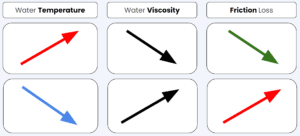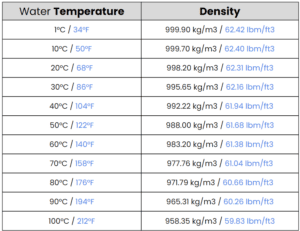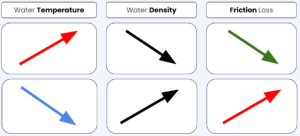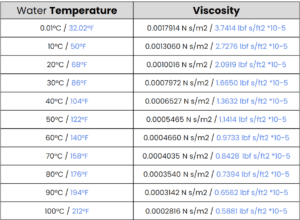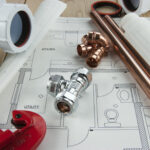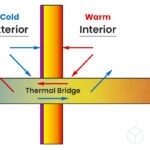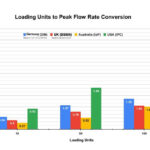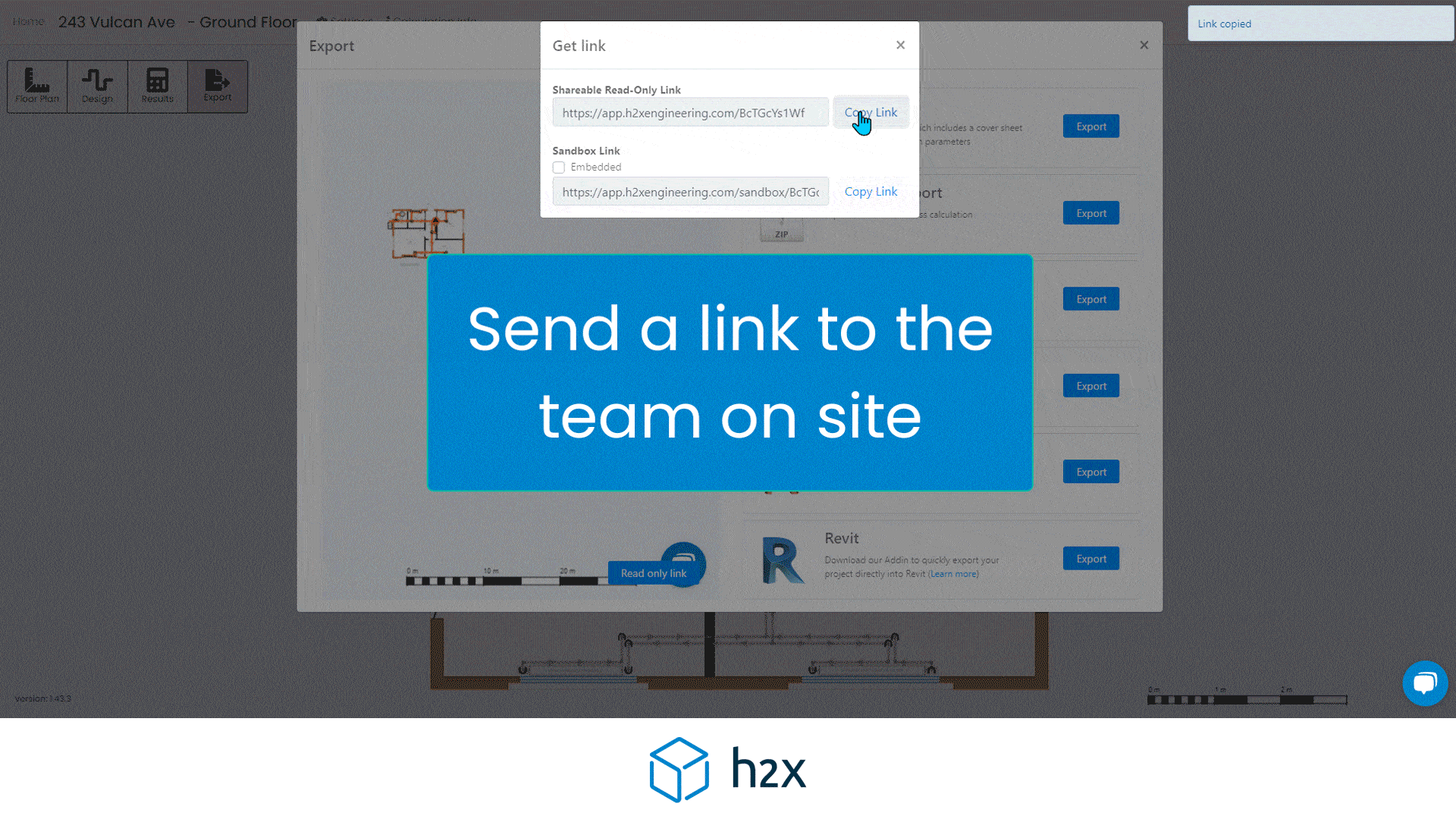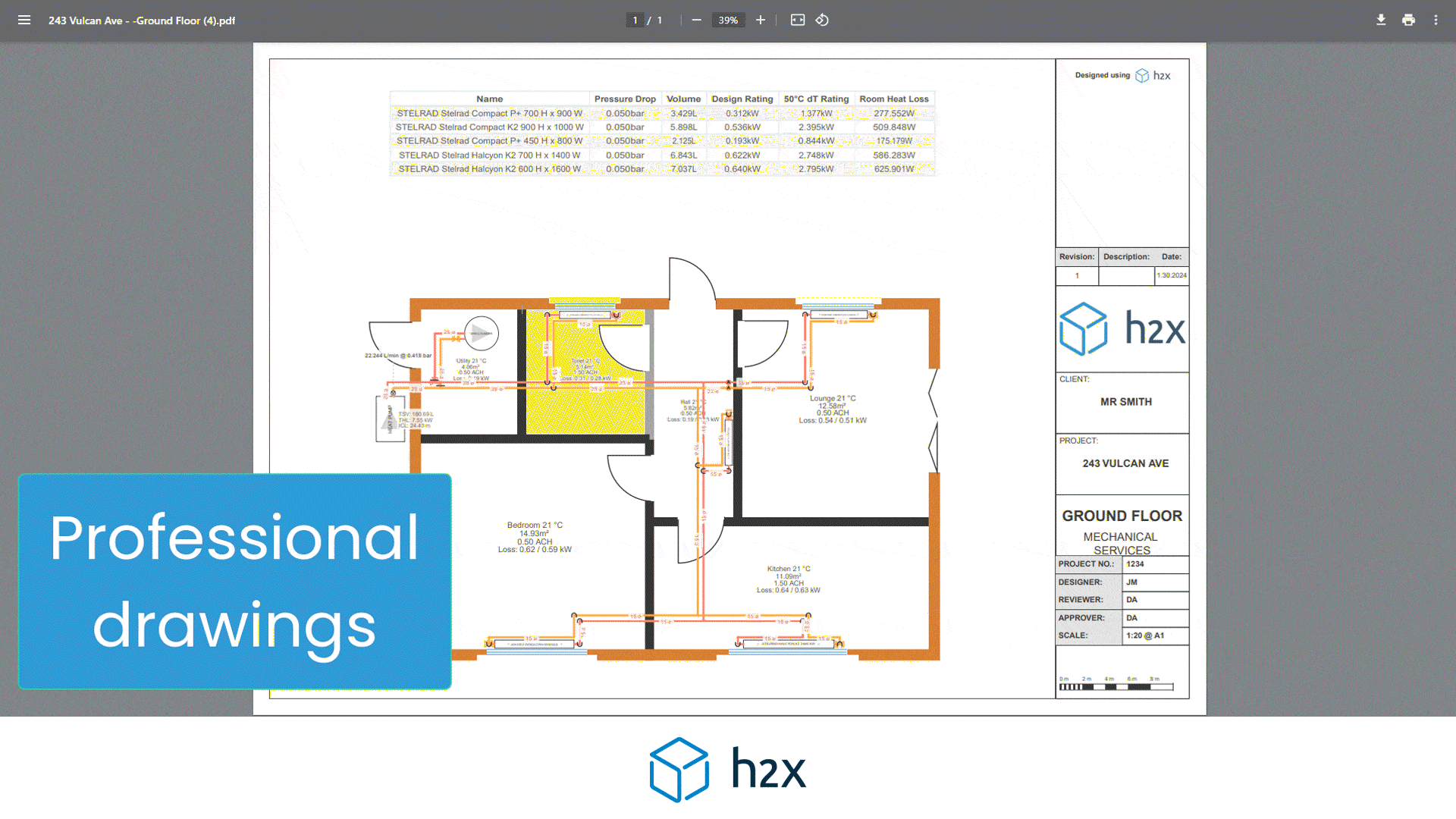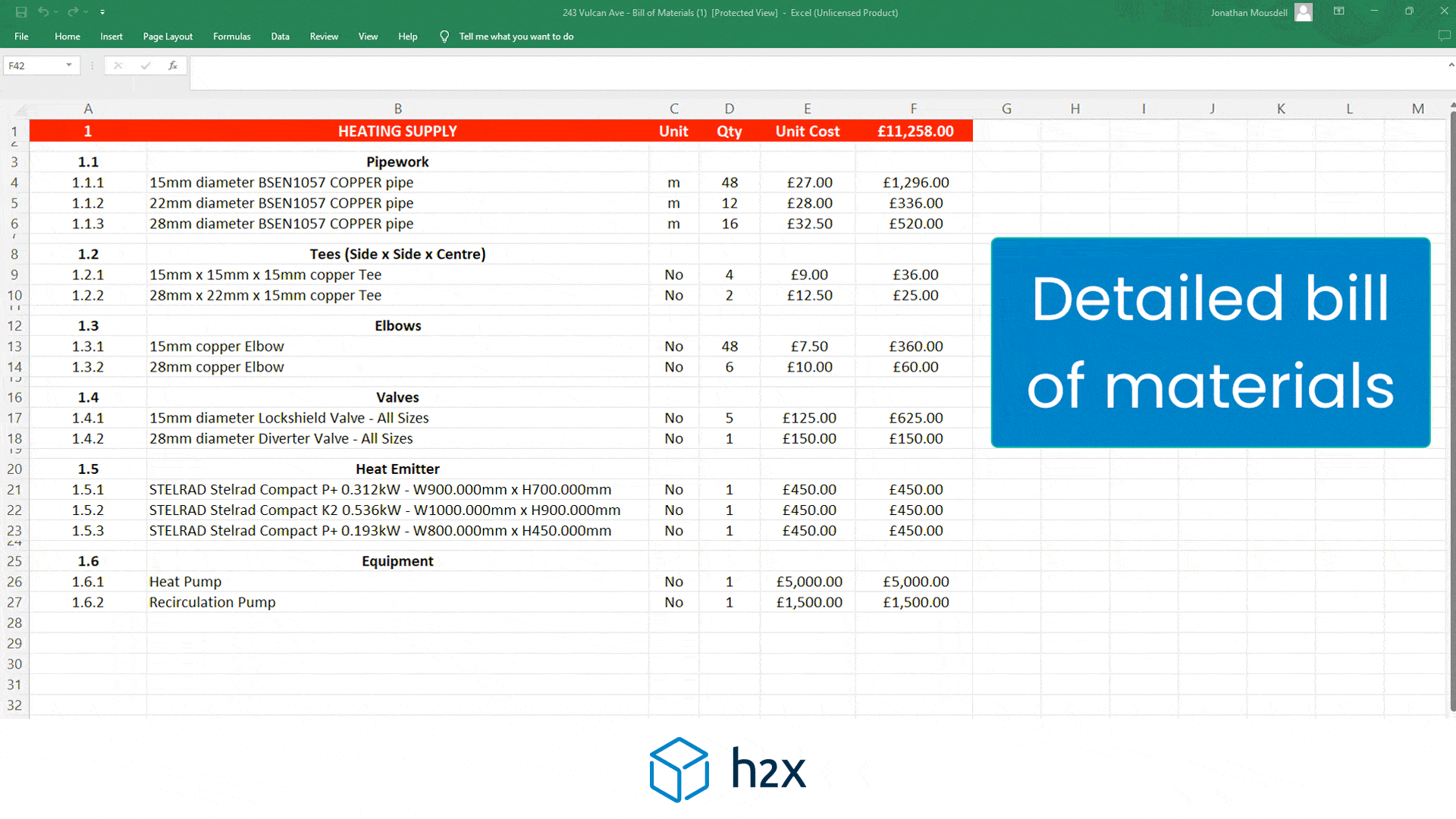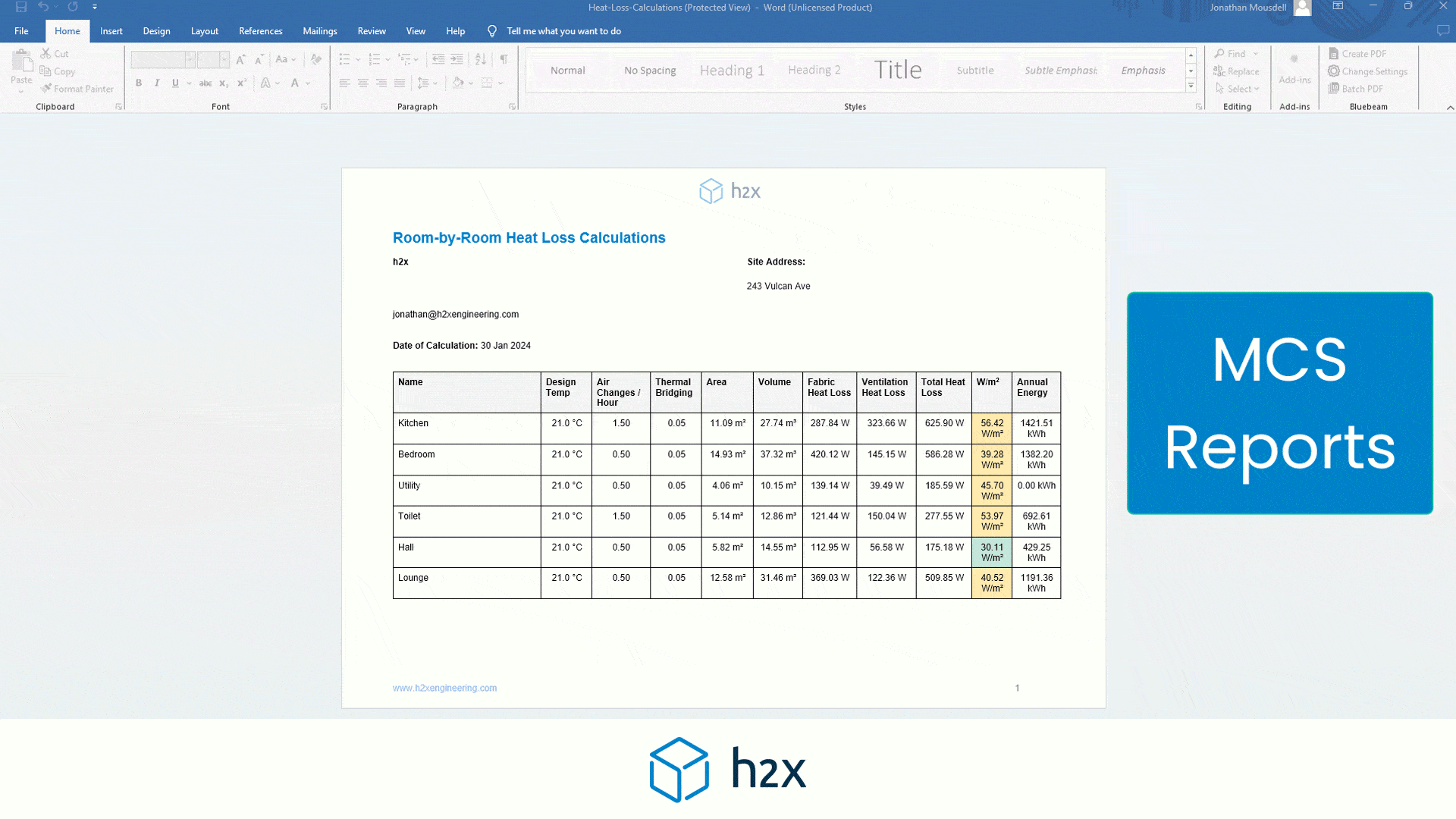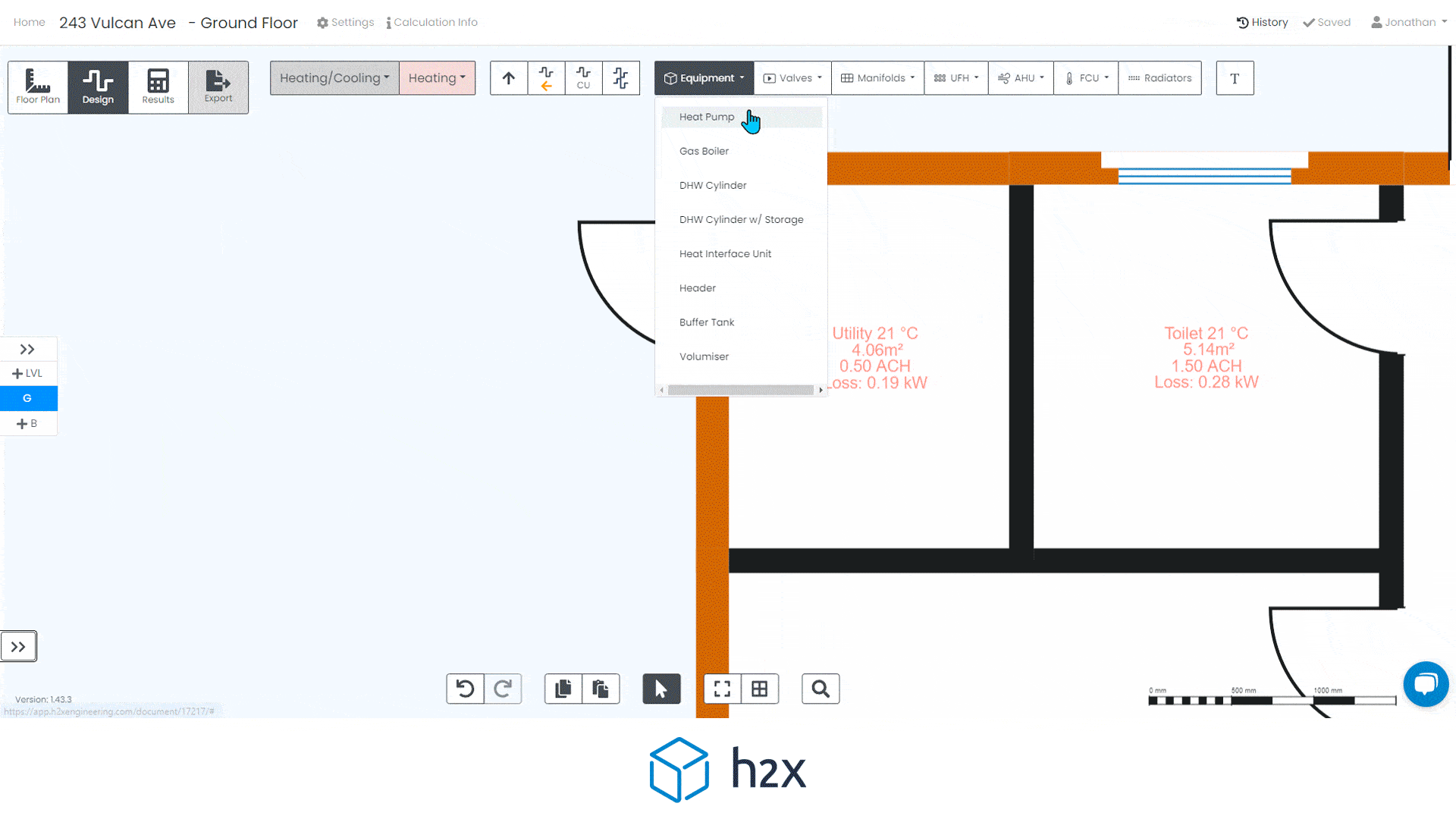
The Correlation Between Water Temperature and Friction Loss in Water Pipes
Commonly known factors in pressure loss calculations include the flow rate of the water, the pipe diameter, and the velocity of the water. However, it is important to understand the other factors too.
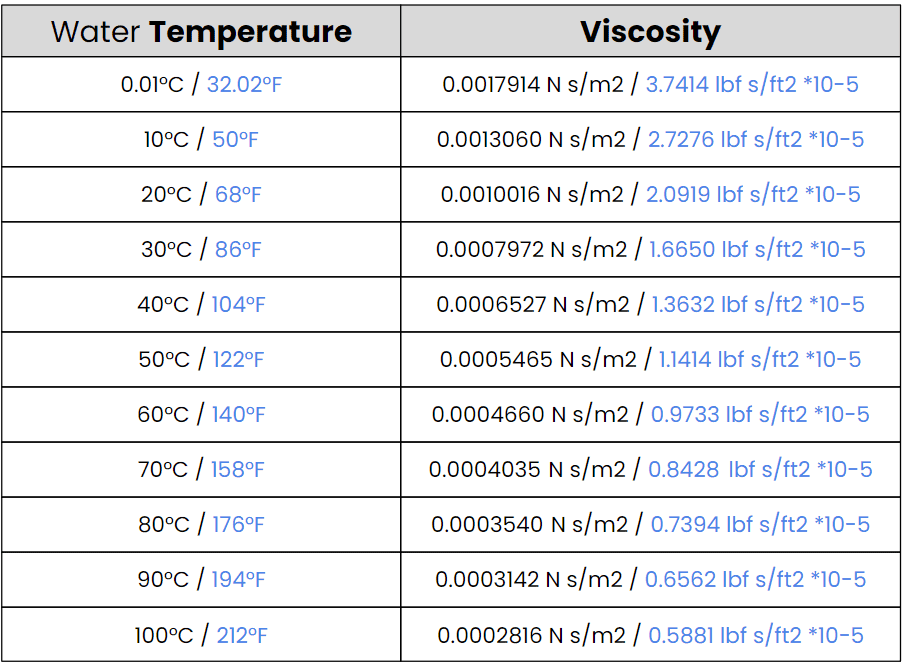
Download your free PDF of this article below.
Commonly known factors in pressure loss calculations include the flow rate of the water, the pipe diameter, and the velocity of the water.
However, it is important to understand the other factors too.
Try our free pressure drop calculator here.
How does water temperature affect pipe friction loss and pressure?
Water temperature (viscosity) plays a significant role in determining pipe friction loss.
As water temperature increases, its viscosity decreases, which leads to reduced friction loss.
Conversely, as water temperature decreases, the viscosity of the water increases, causing greater friction loss.
This is because warmer water molecules have more energy, allowing them to slide past each other more easily.
Colder water molecules have less energy and move more sluggishly, resulting in increased resistance to flow.
How does water density affect pipe friction loss and pressure?
Water density also plays a significant role in determining pipe friction loss.
As water temperature increases, its density decreases, which leads to reduced friction loss.
Conversely, as water temperature decreases, the density of the water increases, causing greater friction loss.
This happens for the same reason as with water temperature – warmer water molecules have more energy, allowing them to slide past each other more easily.
Pressure Calculations Webinar
Learn the fundamentals of pressure loss calculations and watch some real life design examples in our webinar on pressure calculations:
You can watch our other educational webinars here.
h2x will provide accurate friction loss calculations for your design based all of your chosen temperatures, fluid mixtures, and pipe properties.
Check out the video below to see how changing water temperatures and adding glycol to the system will change the sizing results.
In addition, h2x provides automated calculations for flow rates, velocities, pressures, pump duties, plant sizing, and recirculation systems mean that you can focus on your project’s design instead of undertaking tedious calculations.
h2x’s straightforward user interface helps engineers produce high-quality designs and work more efficiently, all while adhering to industry regulations.
The software has already been used to size millions of kilometres of pipes in projects across the world.
Book a demo or start your free trial today to discover how h2x can help you improve your design and calculation workflow.
FAQs
What is friction loss in water pipes?
Friction loss in water pipes refers to the loss of energy or pressure due to the resistance created by the pipe walls as water flows through them.
This resistance is influenced by factors such as pipe material, diameter, length, roughness, flow rate, and water properties like temperature, viscosity, and density.
How does water temperature affect friction loss in water pipes?
Water temperature affects friction loss by altering the water’s viscosity and density.
As temperature increases, water becomes less viscous and less dense, leading to reduced resistance and lower friction loss.
Conversely, as temperature decreases, water becomes more viscous and dense, causing increased resistance and higher friction loss.
How do viscosity and density impact friction loss in water pipes?
Viscosity and density are important properties of water that directly influence friction loss.
Higher viscosity results in increased resistance and greater friction loss, while lower viscosity leads to reduced resistance and lower friction loss.
Similarly, higher density contributes to greater friction loss, while lower density results in less friction loss.
What are the most common equations and methods used to calculate friction loss in water pipes?
The most common equations for calculating friction loss in water pipes include the Darcy-Weisbach equation, the Hazen-Williams equation, and the Manning equation.
Each of these methods accounts for factors such as pipe diameter, length, roughness, and flow rate to determine friction loss.
The choice of equation depends on the specific application and the available information about the water system.
How can I reduce friction loss in my water system?
To reduce friction loss in a water system, consider using pipes with a larger diameter, smoother interior surfaces, or shorter lengths.
What is the role of pipe diameter and length in determining friction loss?
Pipe diameter and length have a significant impact on friction loss.
Larger diameter pipes have less resistance to flow, resulting in lower friction loss, while smaller diameter pipes have higher resistance and increased friction loss.
Similarly, longer pipes have more surface area in contact with the water, leading to greater friction loss, while shorter pipes have less surface area and reduced friction loss.
How does pipe roughness influence friction loss in water pipes?
Pipe roughness refers to the irregularities or imperfections on the interior surface of the pipe.
Rougher pipes have higher resistance to water flow, which results in greater friction loss.
Smoother pipes, on the other hand, have lower resistance and reduced friction loss.
What are the consequences of excessive friction loss in water pipes?
Excessive friction loss in water pipes can lead to reduced flow rate, increased energy consumption for pumping, and inadequate water pressure at the point of use.
It may also contribute to increased wear and tear on the pipes, valves, and other system components, ultimately reducing the overall efficiency and lifespan of the water system.
How do flow rate and velocity impact friction loss in water pipes?
Flow rate and velocity are directly related to friction loss in water pipes.
As flow rate or velocity increases, the resistance to flow also increases, resulting in higher friction loss.
Conversely, as flow rate or velocity decreases, the resistance to flow decreases, leading to lower friction loss.
Are there any tools or software available to calculate friction loss in water pipes?
Yes, there are various tools and software available to calculate friction loss in water pipes.
Some popular options include online calculators, spreadsheet templates, and specialised engineering software.
Most tools typically require input data such as pipe diameter, length, material, flow rate, and water properties to generate accurate whereas h2x allows you to focus wholly on the design, and will calculate all required input data for you.
h2x: All-In-One Tool for Calculating, Designing, Estimating, and Paperwork
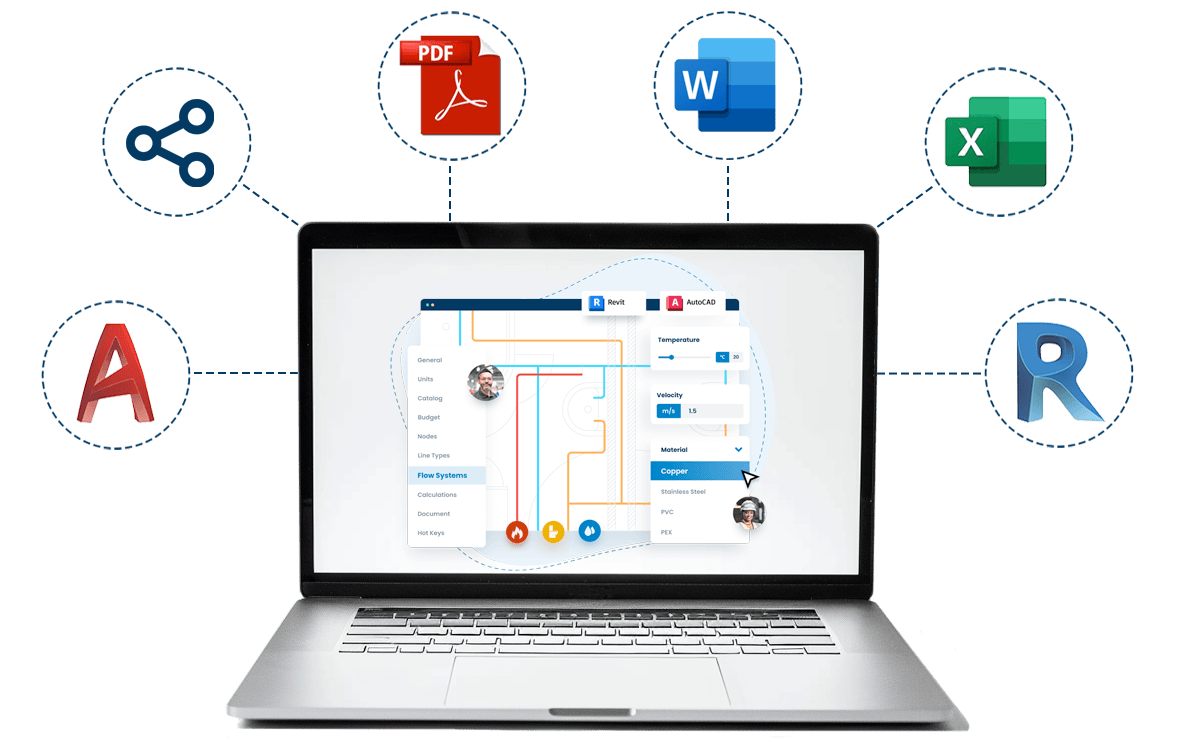
What's in the Pipeline?
Get technical resources delivered to your inbox weekly!
Testimonials
What Installers Say
What Consultants Say
A game changer for the humble plumber. Incredible.
Brad Winkel
Director at Queenstown Plumbing
Brilliant, simple and easy to use. Game changer.
James Major
Director at Hubb
Big time game changer to the industry!
Viv Jude
Director at UHC
Incredible software! Super user-friendly and allows you to save so much time.
Devni Gamage
Engineer at DMA
h2x is great software, our company use it nearly every day. It is easy to use with direct conversion from h2x to Revit.
Callum Craig
Engineer at WDE
h2x is fantastic software. It is very easy to use and the ability to output to Revit is a fantastic time saver.
Joe Kirrane
Engineer at MEP

